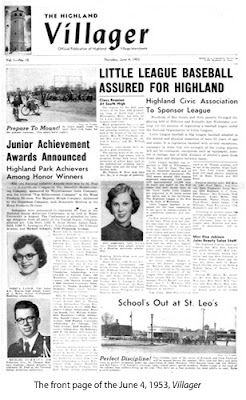So basically, I'm going to have a twice-monthly post about what I discover when reading the Highland Villager. Maybe it'll encourage you to go get your own copy, available anywhere that's anywhere in Saint Paul. Or maybe I'm reading the Highland Villager so that you don't have to? Either way...until this newspaper goes online, information must be set free.
- Story #1: Basement use remains sticking point at Grand Place, by Jane McClure
As usual, the Summit Hill Assn. (SHA)'s zoning codes are restricting what kind of commercial spaces can be used and for what purposes. (I seem to recall that they were trying to get a no chain store ordinance passed, and that it might have failed?) There is a definite tension between controlling and shaping capitalism according to certain values, and having too many restrictions on how and what kind of business can move into a street. I'm not sure on which side of the line this falls...
Councilmember Dave Thune is also quoted.
- Story #2: Selby shops are weathering a season of road construction, by Steve Pease
It's basically an uninteresting piece about kvetching about construction, but it does point to how difficult it really is to weigh short-term and long-term interests when it comes to businesses and commercial streets. Any improvments for the long term (nicer sidewalks, new pipes, new street trees, repaving, etc.) comes at the expense of the short-term (streets are completely inaccessible for a few months, fees and assessments for owners). And because future returns are basically nebulous scratch marks in some planner's notebook while business owners and Sel-Dale Business Assn. chairs are real people with votes and constituents and clout and money, you have a situation that tends to the NIMBY and status quo.
This piece also points out how strongly cars are linked to the economy, even in a walkable place like Saint Paul's Selby Avenue. Basically, for most commercial enterprises, cars + parking = business. This is true almost everywhere in the T.C., with very few exceptions (maybe the U of MN campus). Changing this equation is going to be a very, very long term project. And until then, the tension between providing business owners with parking spaces and making walkable places is going to be one of the main neighborhood battlegrounds.
- Story #3: Neighbors aren't wild about Onion's request, by Jane McClure
The debate is really about the current policy for getting approval for drink-laden patios. You currently need between 60% and 90% of neighboring proeperty owner's consent to recieve the zoning change. The Wild Onion is claiming to have sufficient support from rental tenants, but not the actual building owners. I guess it raises the question of whether or not you have to actually own property to get a say in neighborhood disputes. Should we have a system where only property owners (i.e. the wealthy) can have a say? Where property values trump everyday use? Or, do renters lack the long-term interest in the 'neighborhood' because they don't have an 'investment' in actual property in the area?
More disturbing, perhaps, is that (according to the article) the Wild Onion is the only business on Grand Avenue that can't have drinks on the patio. Of course, it's also the only "dance club" on Grand Avenue, which means its also the most racially diverse spot on the street. And it's also the only place that can't get neighbor's approval for a zoning regulation? Certainly it's no worse (in terms of noise pollution) than Billy's? (For the record, neither of these bars are my cup of tea.)
- Story #4: Hearings set on standards for infill housing, home additions
House size / lot ratios, in particular, have been one of the main ways that suburbs have tried to keep densities very low. Typically, they will set housing lot sizes so that you have these big yards, and only certain kinds of people can afford to build homes in the suburb.
This exampls isn't really very similar, but does point to the same kind of tension over density. I'm struck by my old neighborhood in the North End, where the houses are really close together. There weren't any zoning codes when my house was built in 1905 or so, but somehow people managed to put windows on the front of the home, and deal with the density of having very small yards and houses smushed together. It's not so bad, really.
- Story #5: CommonBond is granted a parking variance for Lex-Ham development, by Jane McClure
It's interesting only because even here, directly choking on the fumes of the freeway, it seems to be difficult to build low-income housing. The neighbors in this very poor neighborhood are voting against having a parking variance for a smaller-than-zoned parking lot at this big apartment site.
And again, parking for cars seems to be the main public problem for most Saint Paul-ites.
- Story #6: BZA denies requiest to allow Dayton Avenue home's renovation as duplex, by Jane McClure
Well, that's about all the intersting city&planning news in the Highland Villager this fortnight, other than the usual op-ed about taxes, letters about the Snelling Avenue median, local high school sports reporting, and Saint Paul crime reports. Maybe someday it'll all be online...

1 comment:
Some of the neighborhoods in St. Paul and Minneapolis really pack the houses next to each other with windows on the side. I guess it is the TC's version of density.
Post a Comment